How to Talk to Your Retriever
Effective communication is the foundation of all retriever training
Effective communication is the foundation of all retriever training

By Eric Keszler
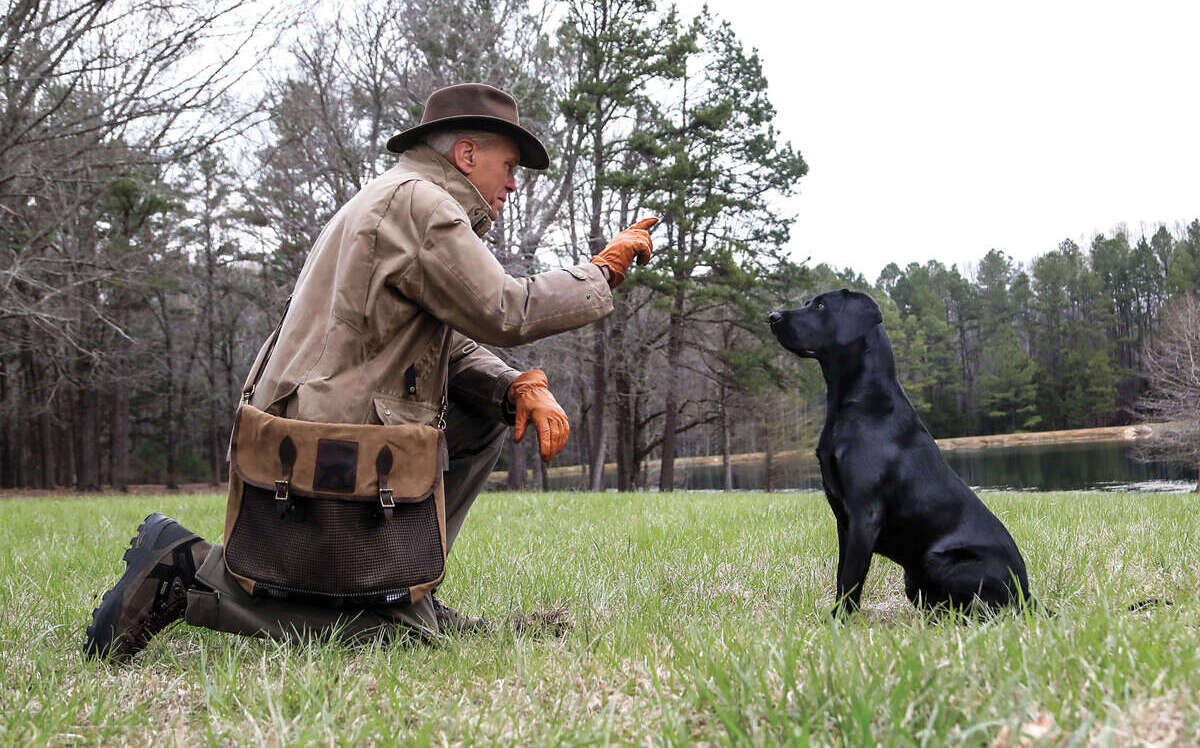
It’s one of my favorite Far Side comics of all time. A man is yelling at his dog. In the cartoon’s upper frame, titled “What we say to dogs,” the man is saying: “Okay, Ginger! I’ve had it! You stay out of the garbage! Understand, Ginger? Stay out of the garbage, or else!” The lower frame shows us the dog’s perspective. All the dog hears is: “blah blah GINGER blah blah blah GINGER blah blah blah . . .”
It’s difficult to think of a better or more amusing example of a mistake that all of us are guilty of making when attempting to communicate with our retrievers. We know that dogs don’t understand our language, at least in the same way that people do, yet we insist on speaking to them as if they did. We can’t help it. We’re only human, after all.
“People try to communicate with their dogs like they would communicate with other people, but dogs don’t understand that,” says Mike Stewart, owner of Wildrose Kennels and author of Sporting Dog and Retriever Training the Wildrose Way. Using positive reinforcement training methods and selective breeding, Stewart has built Wildrose into the largest breeder and importer of British and Irish Labradors in North America. He says that good communication is at the core of all retriever training, because training is all about getting a dog to understand what we want him to do.
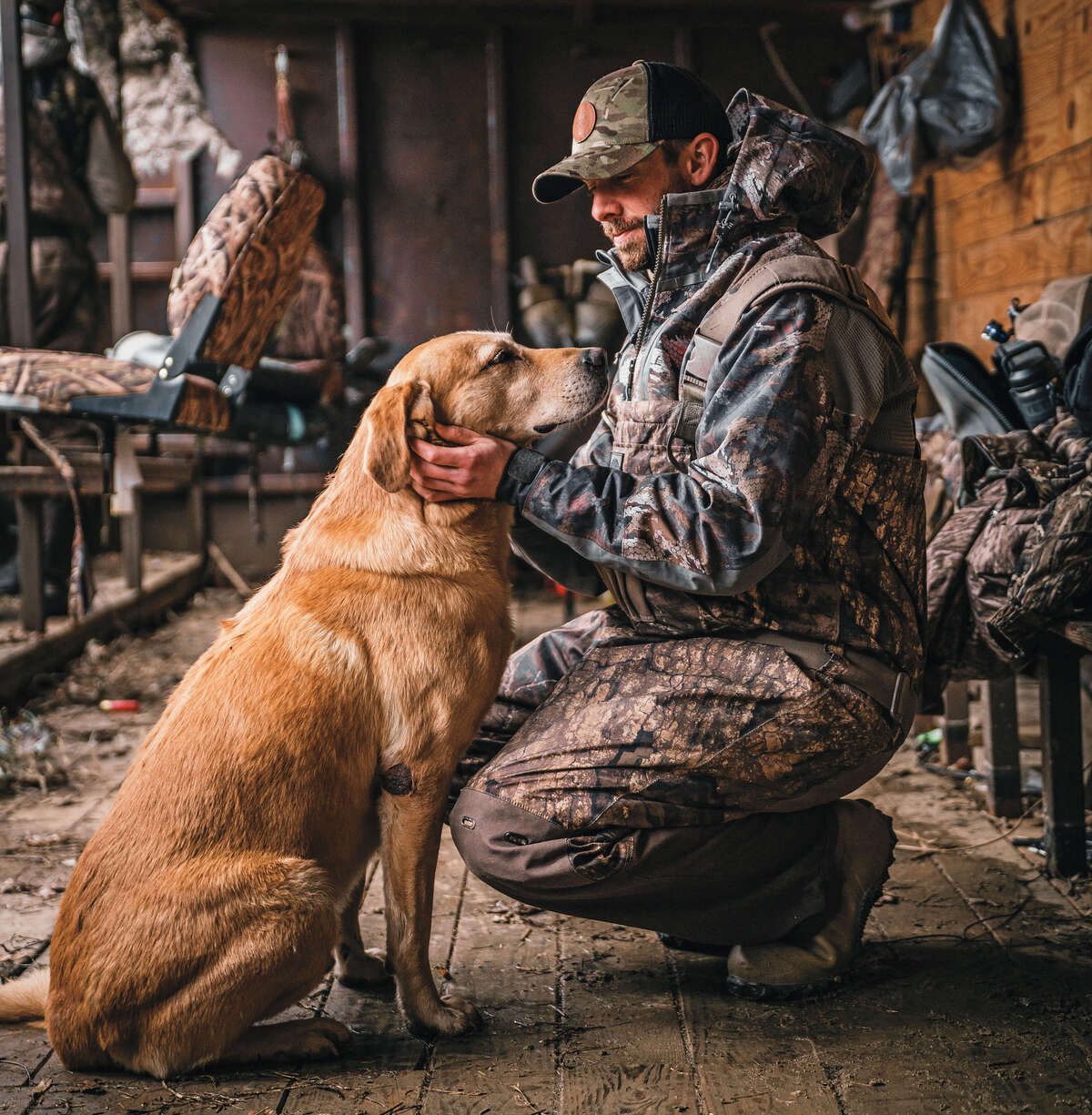
When a dog looks at his owner, oxytocin (known as the love hormone) is released in his bloodstream. Studies of animal behavior show that dogs trust us and want to please us, making them very willing students.
As we delve into this very foundational aspect of training, it might help to back up and understand a little about how the unique relationships between dogs and humans have evolved over the years. “There’s a lot of evidence that dogs basically domesticated themselves,” says Dr. Annie Valuska, a scientist with Purina who specializes in animal behavior. Valuska has worked with wild and domestic animals in the field, in shelters, at zoos, and even at Disney’s Animal Kingdom. At Purina, she says, she gets to “be the voice of cats and dogs,” ensuring that the company’s products are appealing to the end consumer.
“Early humans had a lot of resources that dogs’ ancestors wanted, and these proto-dogs benefited by getting these resources,” Valuska continues. In other words, those early dogs were smart enough to figure out that cozying up to humans was a great way to get food and other things they needed to survive.
Over the millennia, this relationship became stronger, especially when humans found out that dogs could help them survive by fending off predators, guarding their families and their possessions, and assisting with hunting. As dogs evolved and became domesticated, they experienced a number of physical and behavioral changes, Valuska says, including an increased ability to digest carbohydrates, a reduced fear of humans, and a special knack for communicating with people. “Today, studies indicate that dogs may communicate with people better than any other animal does,” she says.
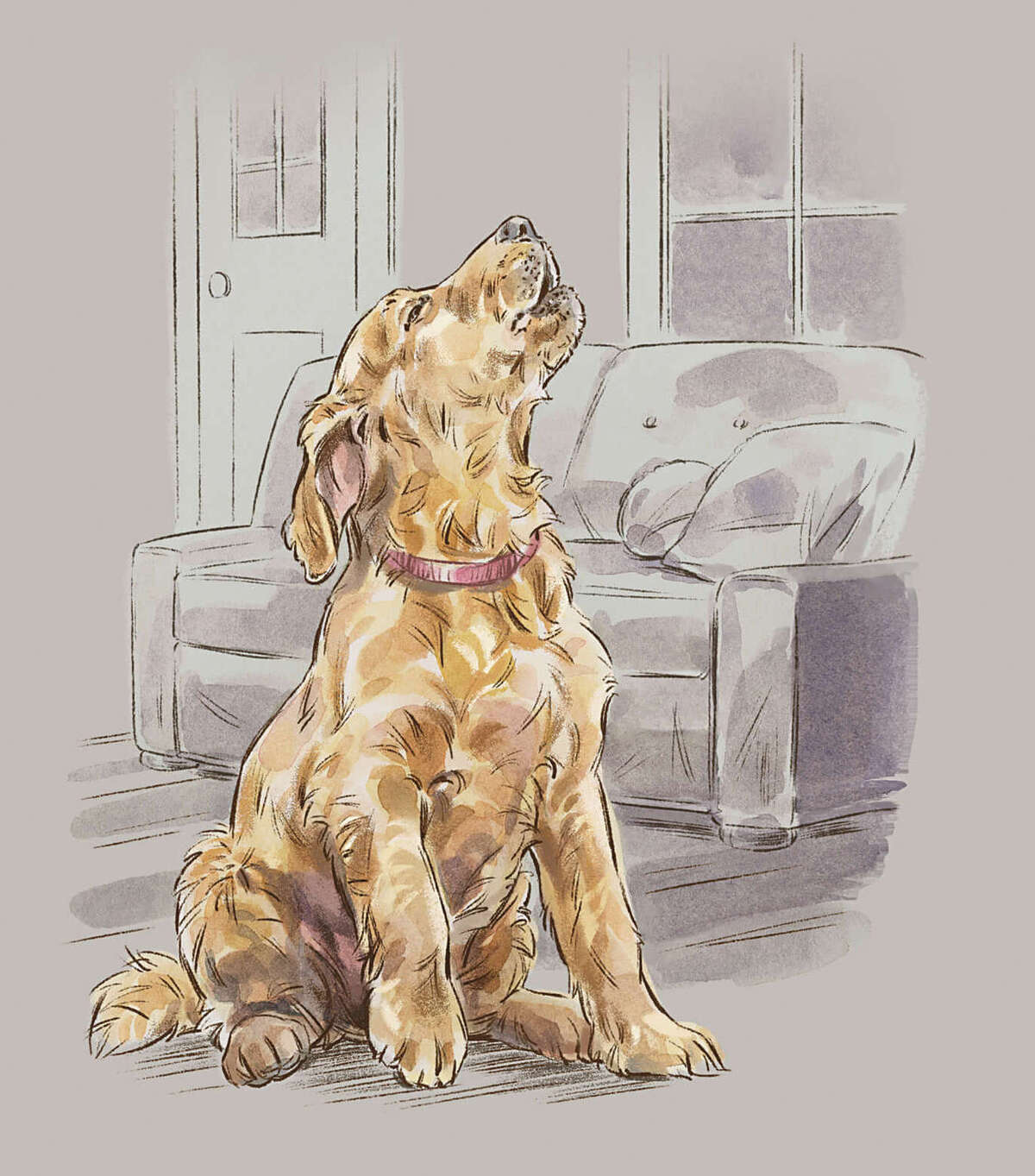
Once people began selectively breeding dogs for certain traits, things got really interesting. Now we have dogs that are born with a predisposition for specific jobs, like retrieving, pointing, herding sheep, finding contraband, assisting people with disabilities, and much more. With the right training, it’s amazing what today’s dogs can do. But they still can’t talk to us. And, try as we might, we still can’t talk to them.
Exercise: Establishing Eye Contact
To help encourage eye contact and a focus on you, Stewart recommends the following exercise.
1. Place your dog on a raised surface, such as a picnic table, and make him sit.
2. Hold a treat next to your face. When he makes eye contact with you, immediately give him the treat.
3. Once he’s accomplished the previous step a few times, begin holding the treat out to your side. His eyes will likely follow the treat. Wait until his eyes come back to you, and as soon as they do, immediately give him the treat.
4. Once he’s solid on Step 3, start gradually moving the treat farther away from you, setting it down on the raised surface or ground and waiting for eye contact before releasing him to eat it. Later, you can extend this training to thrown bumpers—he will watch the bumper fall, but wait until he makes eye contact with you to send him.
“People communicate primarily through verbal language,” Stewart says, “but dogs communicate primarily through body language.” For example, a dog’s tail will tell you a lot about what’s going on in his head. “If his tail is too low or too high, it means there might be a problem. If his tail is straight out and wagging, that means he’s happy and is in the right zone for training. Similarly, if a dog licks his lips, it means he accepts what you’re doing and is compliant.” A good trainer learns to recognize these kinds of signals and adjusts lessons accordingly.
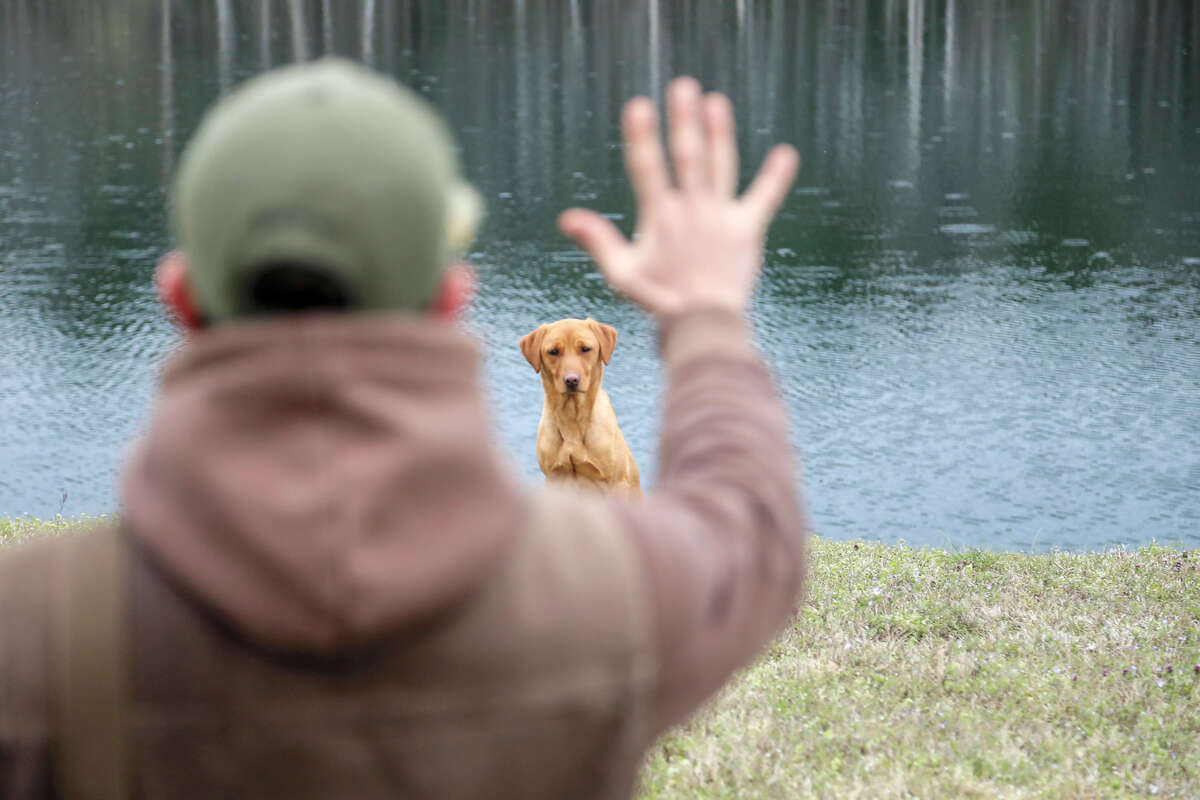
TRAINING TIP: For most dogs that are bred to retrieve, the retrieve itself can be a powerful reward. You can use a retrieve to help reinforce many basic obedience and hunting skills.
It can be difficult for humans to pick up on these kinds of cues, which are often very subtle. Conversely, dogs are extremely good at understanding the physical cues that we, as humans, are putting out there, whether we’re doing it intentionally or not. “Dogs are good at understanding us, but we’re not as good at understanding them,” Valuska says. “Dogs are sensitive to our tone and pitch, and they’re capable of following pointing gestures and following what we are looking at with our eyes.” They also rely much more on olfactory communication than we can even comprehend. They can become distracted by smells in the environment that we’re unaware of, and they can even sense our moods from smells that we may be emitting.
“The more we study dogs, the more surprised we are about what dogs are picking up on,” Valuska notes. So we need to be very careful and very intentional about the cues that we give our companions. For example, if you become angry with your dog in a training situation, he is likely to pick up on that anger, even if you try to suppress it, and may become fearful. Fear is the enemy of effective training. When a dog is afraid, cortisol is released in his body. Cortisol is known as the stress hormone, and Valuska says it reduces a dog’s ability to learn.
Sometimes, if we’re not careful with our physical cues, we can accidentally reinforce a behavior that we don’t want. “Dogs are always learning and always paying attention to us,” Valuska says. “If a dog can see, smell, or hear you, you are training.” Think about the dog that jumps up on people—a behavior that most of us would agree is undesirable. What do most well-meaning people do in this situation? They might say no or down, but then they reach down and pet the dog. It doesn’t take long for the dog to figure out that if he jumps up on someone, he’ll get rewarded with attention. A much better response is to turn around and ignore him, removing any kind of reward for his behavior. Even better, Valuska says, is to train an alternate behavior, like sit, in this kind of situation. Giving the dog something to work toward allows you to say “yes” to something rather than just saying “no” to jumping.
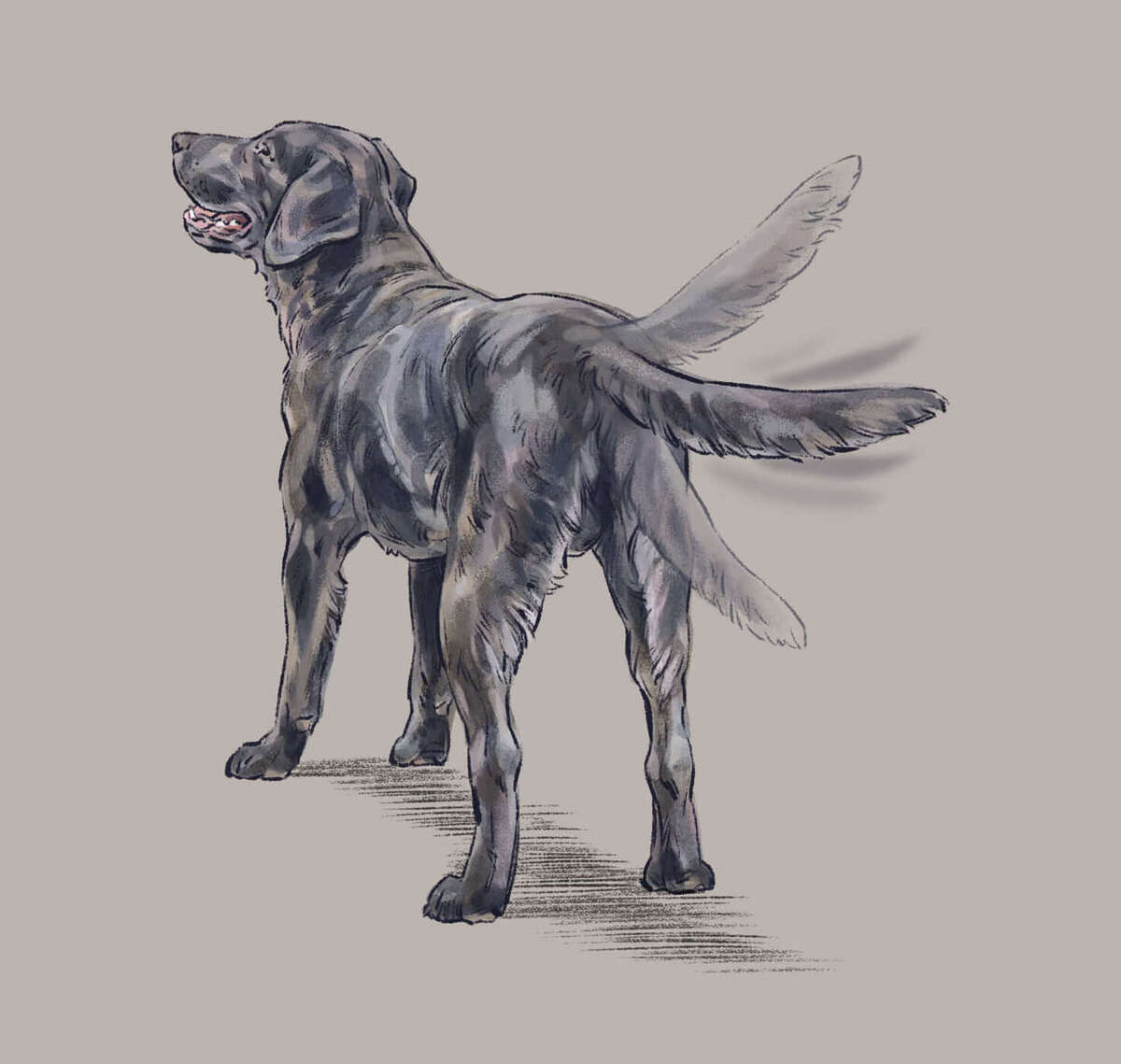
Turns out that dogs really enjoy being with us, even more so than most of us realize. When a dog looks at his owner, a hormone called oxytocin is released in his bloodstream, Valuska says. Oxytocin is known as the love hormone and is associated with trust and relationship building. “Dogs trust us and want to please us,” Valuska says. “This can be very powerful.”
So dogs are more-than-willing students with built-in capabilities to learn the tasks that we want them to perform. The end goal is for the retriever to learn a command and perform a task based on that command. The trick is getting him to associate that task with the command. The magic happens when we learn some of their language and they learn some of ours.
“Dogs do understand some words,” Valuska continues. “They’re creating an association with a word, but they’re paying attention to so much more.” This can include facial expressions, tone of voice, smell, and more. This is how dogs learn our language. So how do we begin to learn theirs?
“The most powerful communicators are your body language, tone, and verbal commands,” Stewart says, “but it all begins with eye contact. If a dog is looking at you, he’s paying attention. If not, he’s distracted or fearful. If you can control a dog’s eyes, you can train him.” For any task you’re trying to teach your dog, “start with eye contact and build from there.”
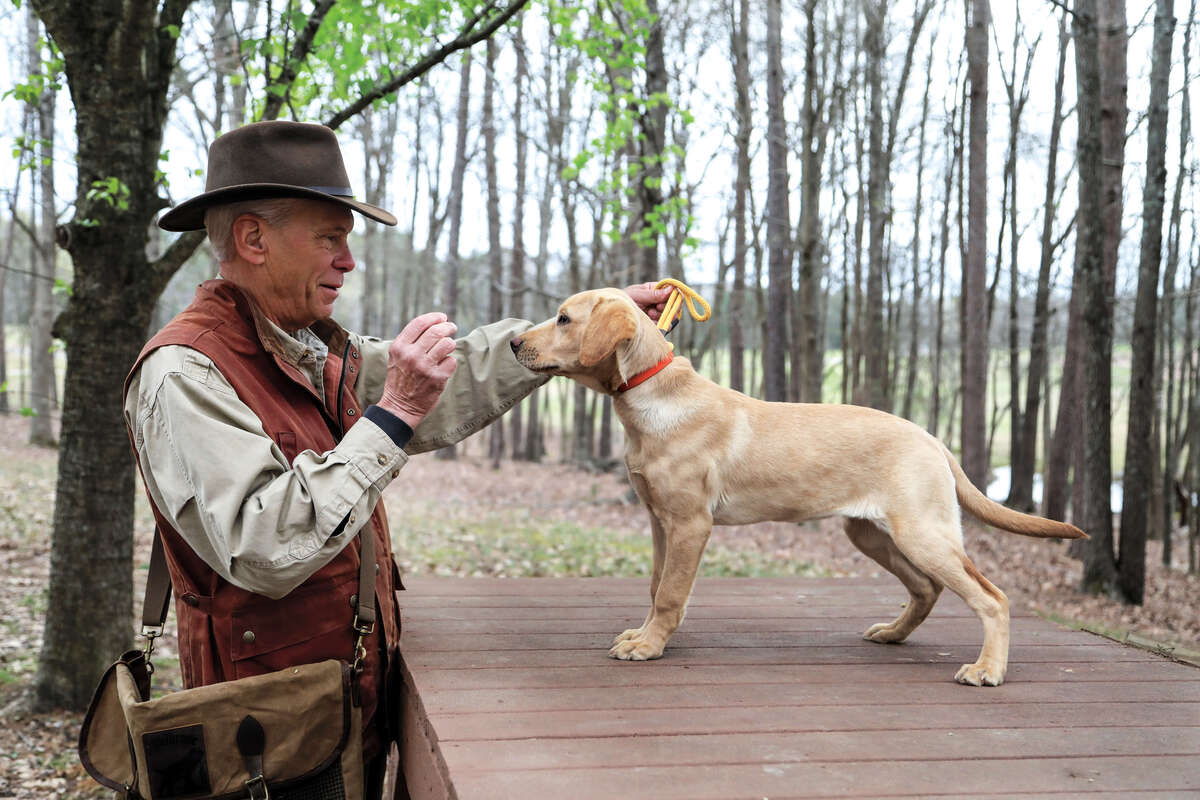
TRAINING TIP: Timing of rewards is vitally important. Make sure you provide the reward as the desired behavior is happening. If you wait too long, the dog won’t understand what you’re rewarding him for.
Beyond eye contact, your tone of voice is vitally important. “Tone is more important than what you’re saying,” Stewart notes. “It doesn’t matter what you say. It’s how you say it.” For example, reward words are most effective when they’re given with high-pitched, friendly tones. Corrections should be given with low-pitched or neutral tones.
Body language is another very powerful communicator. Watch two dogs that have just met each other. For people who know what to look for, it can be easy to tell from the dogs’ body language if they’re feeling aggressive, friendly, submissive, or fearful. As a trainer, standing tall over a dog can signal authority. Getting down on one knee, opening your arms, and smiling communicates friendliness.
Using any or all of these canine communication tools will help you get through to your retriever whenever you’re teaching a verbal command, such as sit, stay, heel, or come. A no delivered with direct eye contact and a low, firm tone will be much more effective than no repeated 15 times without proper tone, eye contact, and body posture. If you deliver the come command from a kneeling position with open arms and a friendly, encouraging tone, your retriever will begin to associate the command with something fun and pleasurable, and he’ll want to do it again and again.
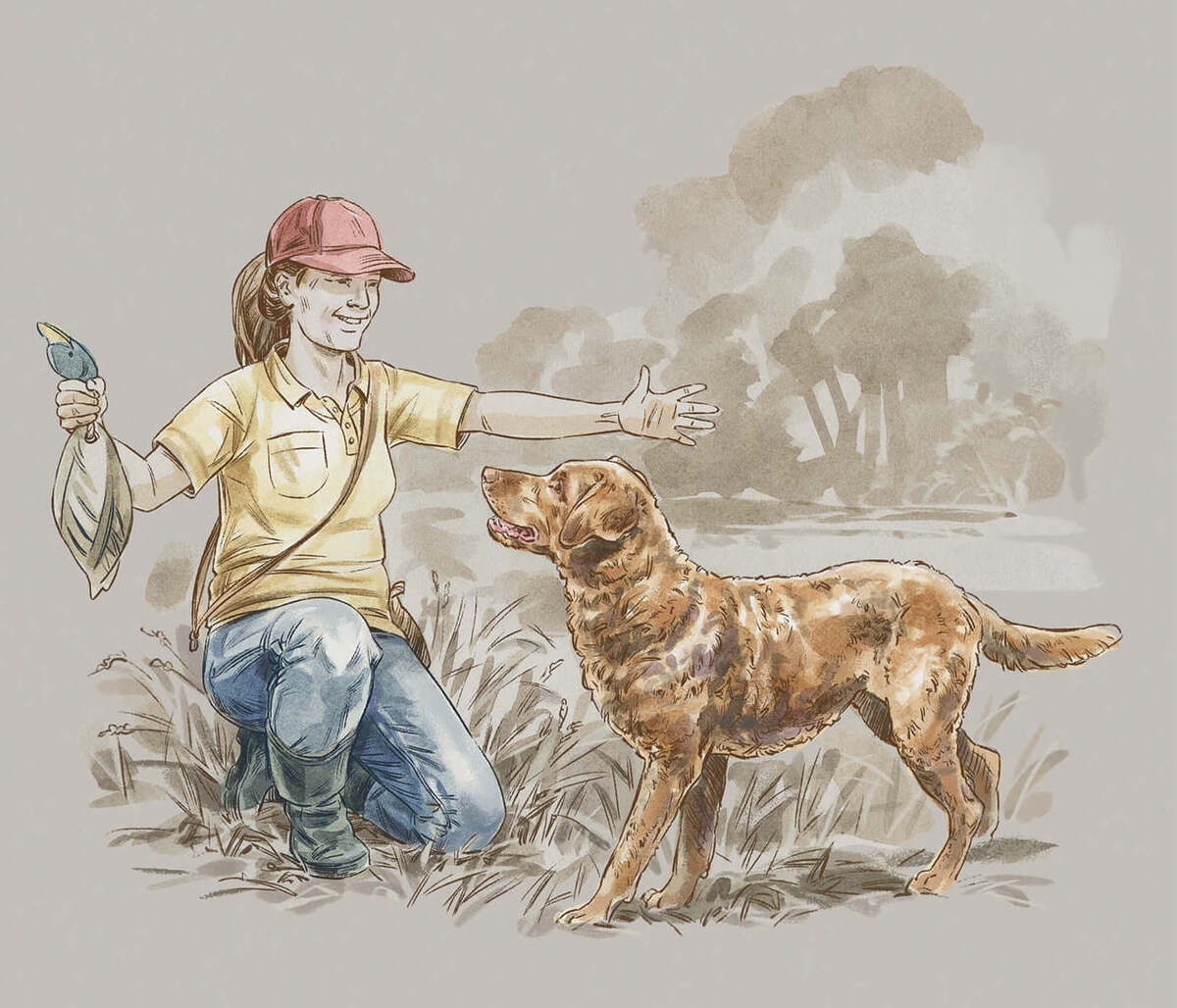
Exercise: Place Training
Stewart says place training is a foundational step in a retriever’s education. It teaches him to stay in one place until you release him. He suggests using a raised platform or mat to teach this skill.
1. With your pup on a lead, use a positive tone of voice and the command place to encourage him to get on the platform. When he does, reward him with affection. Leave the lead on.
2. If he leaves his place, which he will, simply pick up the lead, take him back, and repeat Step 1.
3. Once he gets the idea that he’s supposed to stay there, take a step away from his place. If he leaves the place, repeat Step 1 again.
4. Gradually start taking more and more steps away and increasing the time that he stays on his place. Over time, he’ll understand that he is supposed to remain there until you release him.
5. Eventually, you can transfer this skill to other “places,” such as a bed or mat that you take with you on the road, a crate, or even a spot in the duck blind.
Reminder: Always go back to the place to release the pup. Never do it from across the room or from a distance
Many of the principles behind these techniques have been developed using new information about canine behavior gleaned from some fascinating studies of dogs and their relationships with people. If you delve into the science, you’ll find that communicating effectively with your dog is about much more than a few simple exercises and training tips; it’s about establishing a positive bond with your retriever, whether you’re in an active training situation or not. Remember that your dog is always watching and learning. “We need to set our dogs up for success by constantly providing useful feedback and information, and by building a bond and giving attention,” Valuska says. “It’s not just about what happens in a formal training session.”
Some traditional training methods were based on outdated theories about wolf behavior, especially how certain wolves are leaders within a pack’s social structure. Effective training, the thinking went, meant you had to be the “alpha dog” in the relationship, laying down the law and even sometimes instilling fear in your trainee.
But Valuska says that years of domestication have made modern dogs quite different from wolves. Training methods that rely mostly on establishing dominance, she says, have been shown to be less effective than other methods, where almost all interactions are positive. “We should be working with our dogs,” she says. “Remember that you’re on the same team. If your dog isn’t learning as quickly as you’d like, you should be asking yourself, ‘What can I do to help the dog understand what I want him to do?’ Keep things predictable, give clear signals, and make it a positive experience and fun for everyone involved.”
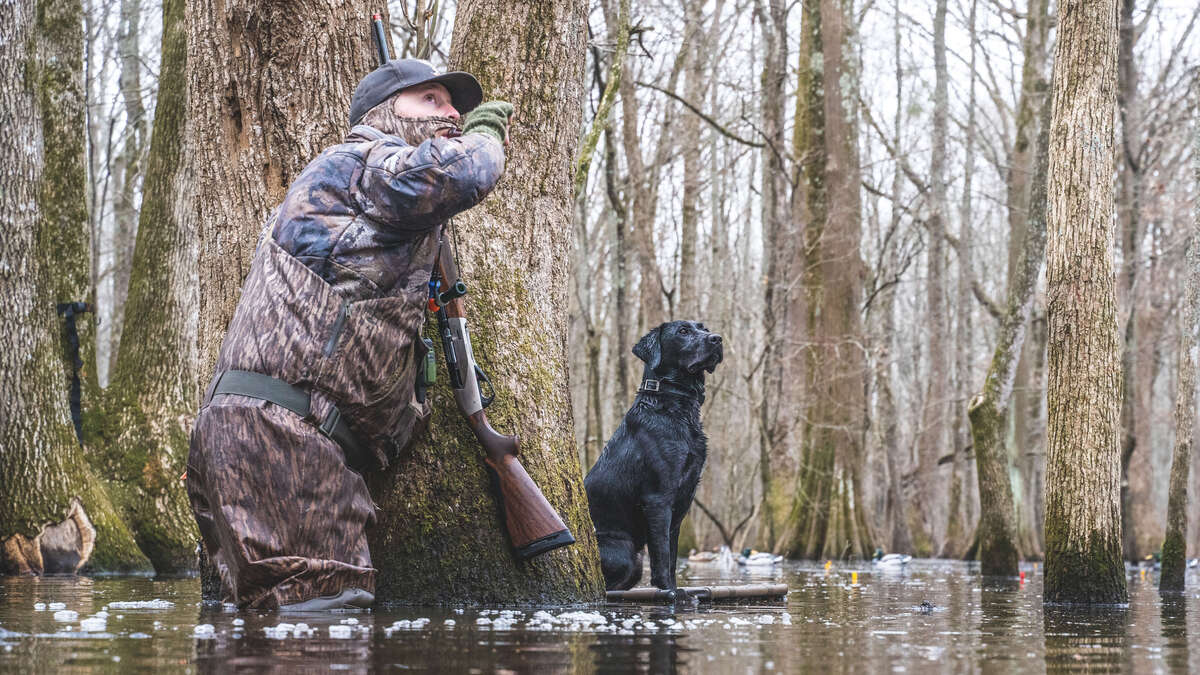
Ducks Unlimited uses cookies to enhance your browsing experience, optimize site functionality, analyze traffic, and deliver personalized advertising through third parties. By continuing to use this site, you agree to our use of cookies. View Privacy Policy